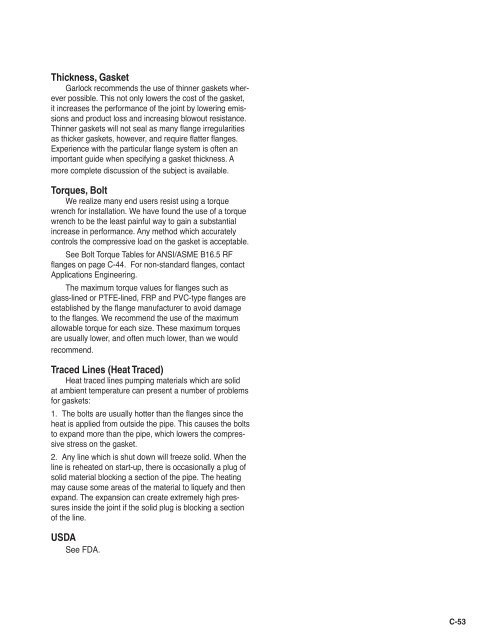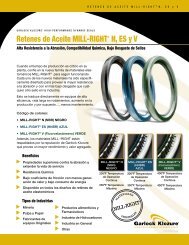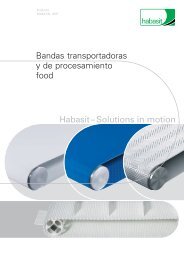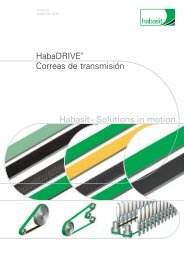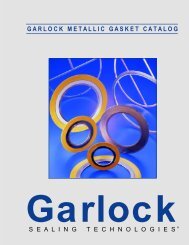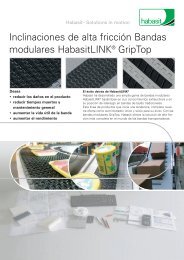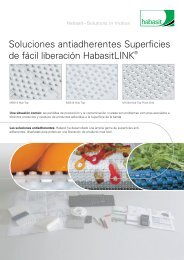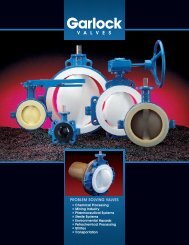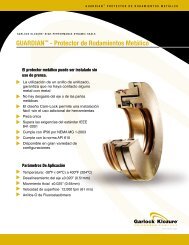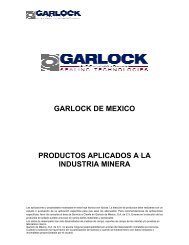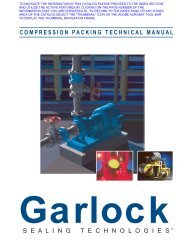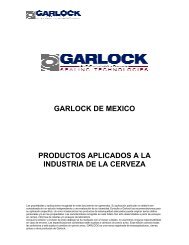Engineered Gasketing Products
Engineered Gasketing Products
Engineered Gasketing Products
- No tags were found...
You also want an ePaper? Increase the reach of your titles
YUMPU automatically turns print PDFs into web optimized ePapers that Google loves.
Thickness, GasketGarlock recommends the use of thinner gaskets whereverpossible. This not only lowers the cost of the gasket,it increases the performance of the joint by lowering emissionsand product loss and increasing blowout resistance.Thinner gaskets will not seal as many flange irregularitiesas thicker gaskets, however, and require flatter flanges.Experience with the particular flange system is often animportant guide when specifying a gasket thickness. Amore complete discussion of the subject is available.Torques, BoltWe realize many end users resist using a torquewrench for installation. We have found the use of a torquewrench to be the least painful way to gain a substantialincrease in performance. Any method which accuratelycontrols the compressive load on the gasket is acceptable.See Bolt Torque Tables for ANSI/ASME B16.5 RFflanges on page C-44. For non-standard flanges, contactApplications Engineering.The maximum torque values for flanges such asglass-lined or PTFE-lined, FRP and PVC-type flanges areestablished by the flange manufacturer to avoid damageto the flanges. We recommend the use of the maximumallowable torque for each size. These maximum torquesare usually lower, and often much lower, than we wouldrecommend.Traced Lines (Heat Traced)Heat traced lines pumping materials which are solidat ambient temperature can present a number of problemsfor gaskets:1. The bolts are usually hotter than the flanges since theheat is applied from outside the pipe. This causes the boltsto expand more than the pipe, which lowers the compressivestress on the gasket.2. Any line which is shut down will freeze solid. When theline is reheated on start-up, there is occasionally a plug ofsolid material blocking a section of the pipe. The heatingmay cause some areas of the material to liquefy and thenexpand. The expansion can create extremely high pressuresinside the joint if the solid plug is blocking a sectionof the line.USDASee FDA.C-53


